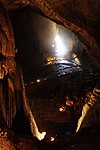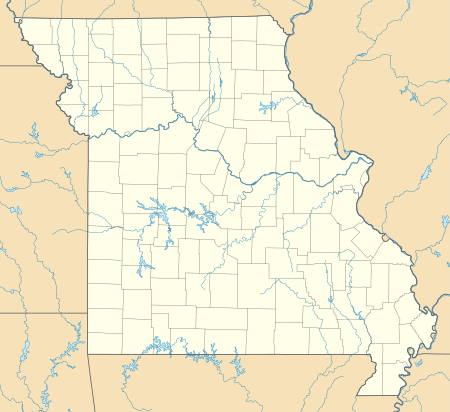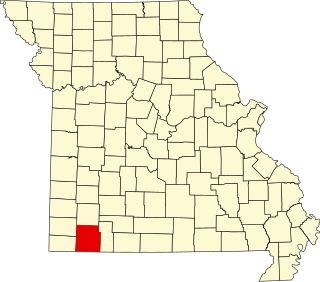There are 16 National Natural Landmarks in Missouri.
| Name | Image | Date | Location | County | Ownership | Description |
|---|---|---|---|---|---|---|
| Big Oak Tree State Park |  | May 1986 | East Prairie 36°39′18″N89°19′42″W / 36.655°N 89.32833°W | Mississippi | state | A rare untouched wet-mesic bottomland hardwood forest in the Mississippi Alluvial Plain, it is the home of several state and national champion trees |
| Carroll Cave | 1977 | Camden | private | Contains a dendritic system of subsurface karst streams and tributaries. | ||
| Cupola Pond | 1974 | Ripley | federal | One of the most ancient sinkhole ponds in the Ozark plateaus. Located in Mark Twain National Forest. | ||
| Golden Prairie |  | 1975 | Golden City 37°21′45″N94°09′01″W / 37.36261°N 94.15019°W | Barton | private | An unplowed remnant of the tall grass prairie ecosystem. |
| Grand Gulf State Park |  | June 1971 | Thayer 36°31′27″N91°32′38″W / 36.52427°N 91.54389°W | Oregon | state | An excellent example of karst topography, this canyon is a collapsed dolomite cave with a 200 feet (61 m) natural bridge. Water in this canyon emerges 9 miles (14 km) away in Mammoth Spring, Arkansas. |
| Greer Spring |  | 1980 | 36°47′12″N91°20′51″W / 36.786667°N 91.3475°W | Oregon | private | Spring in the Ozarks that discharges into a high quality, cascading stream. |
| Maple Woods Natural Area | 1980 | Clay | state | Contains a nearly virgin sugar maple and mockernut hickory forest. | ||
| Maramec Spring |  | October 1971 | St. James 37°57′19″N91°32′11″W / 37.95526°N 91.53632°W | Phelps | private | A natural spring, the fifth largest in the state. It has a notable trout park and a historic iron works in a privately owned park. |
| Mark Twain and Cameron Caves |  | 1972 | 39°41′19″N91°19′54″W / 39.68864°N 91.33153°W | Marion | private | Exceptionally good examples of the maze type of cavern development. |
| Marvel Cave |  | 1972 | 36°40′03″N93°20′23″W / 36.6675°N 93.3397°W | Stone | private | Includes one of the greatest dripstone units of all the Ozark caves. |
| Onondaga Cave State Park |  | 1980 | 38°03′39″N91°13′38″W / 38.060833°N 91.227222°W | Crawford | state | Contains an unusually large and varied number of speleothems. |
| Pickle Springs | 1975 | Ste. Genevieve | state | Contains one of the finest Pleistocene relict habitats in Missouri. | ||
| Taberville Prairie Conservation Area |  | 1975 | St. Clair | state | One of the largest remaining virgin tall grass prairies. | |
| Tucker Prairie | 1975 | Callaway | private | A virgin tall grass prairie occurring within the transition zone between the oak-hickory forest and typical tall grass prairie. | ||
| Tumbling Creek Cave | 1980 | Taney | private | Contains the most diverse fauna known for any cave west of the Mississippi River. | ||
| Wegener Woods | 1975 | Warren | private | An essentially virgin oak-hickory-dominated forest in a condition of gradual change to a sugar maple-dominated forest. | ||













